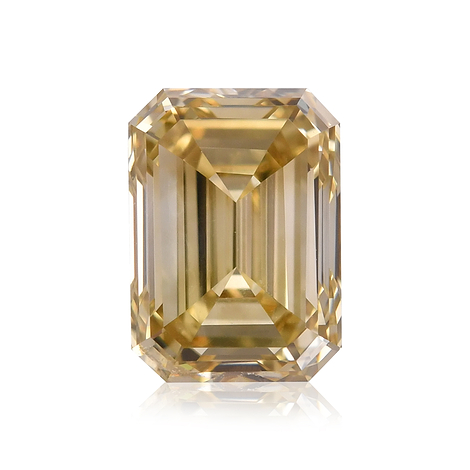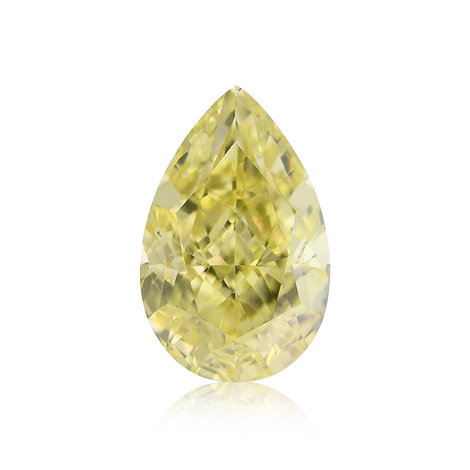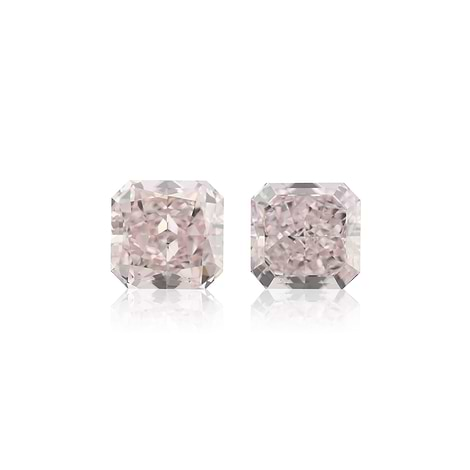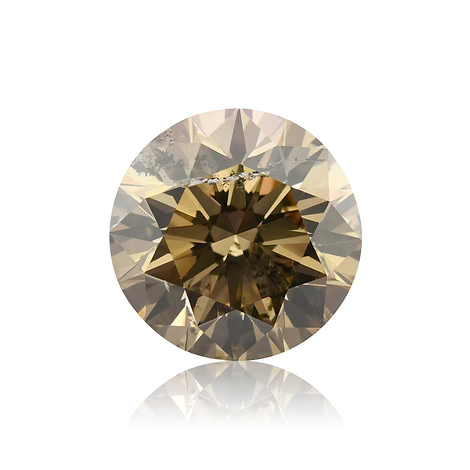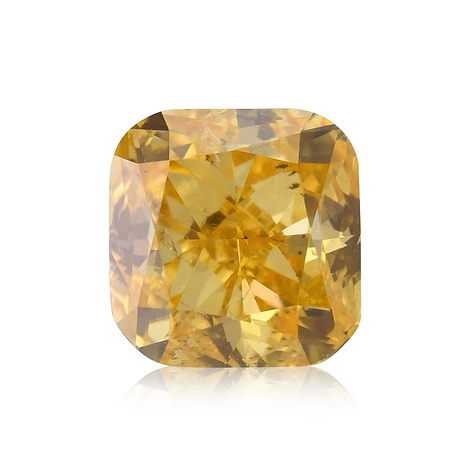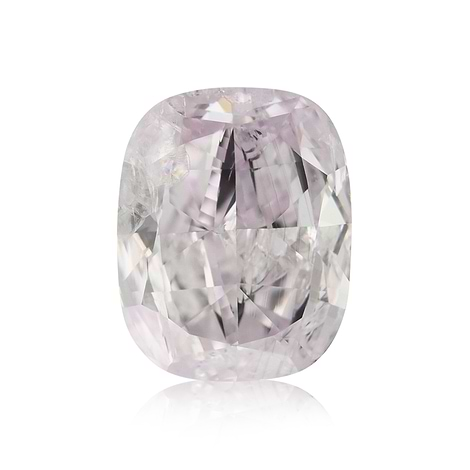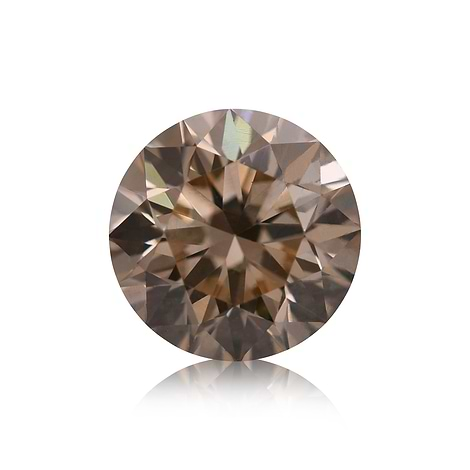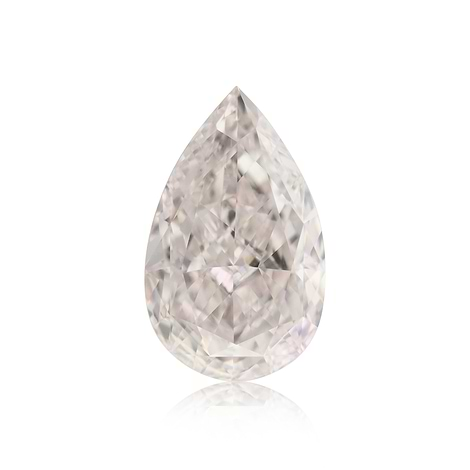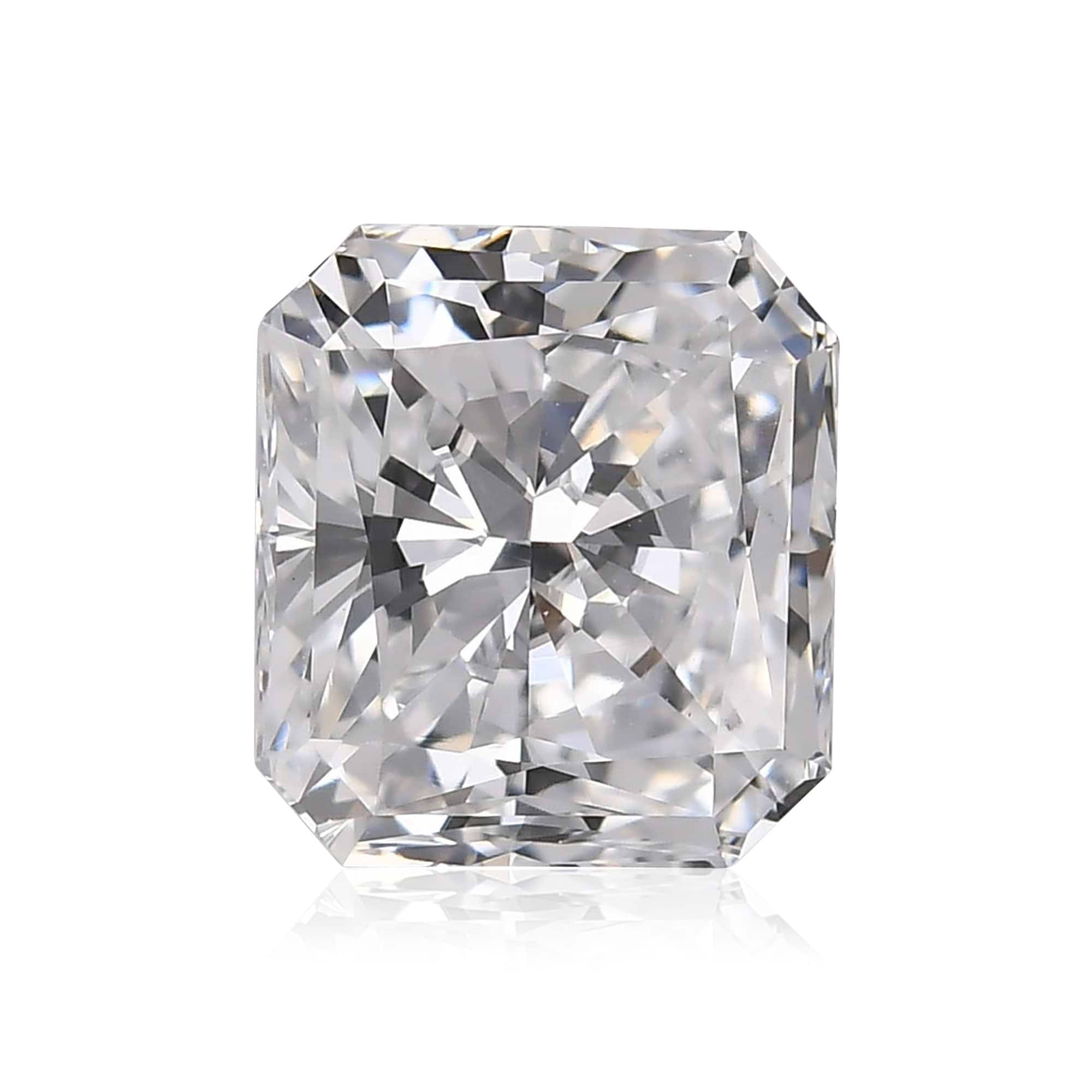Decoding diamond treatment is a critical topic for today’s shopper—because there are so many treatments out there. We know that not every diamond coming from the earth is gorgeous and free from noticeable flaws. Nature is nature and that’s one of the reasons why flawless (F) diamonds and completely colorless (D) diamonds are almost unheard of.
Advancements in technology today offers diamond shoppers treated diamonds that can exceed their expectations. They may cost less than their natural untreated counterpart.
These treatments may or may not be permanent (called stable). So one must assess the risks of enhancements and buy with eyes open. Let’s look at all the treatments so you can make an informed decision---and be confident in your purchase.
The phrase diamond treatments covers a broad range of treatment types including, heat treated diamonds, laser drilling, color treated diamonds, diamond filling and coatings. All these treatments are designed to improve the clarity, the beauty and salability of diamonds. But the shopper must dig deeply into this topic to make sure they understand the pros and cons of these treated diamonds. That way, when they purchase, they understand fully if their expectations are met.
Many treatments are undetectable to the general public—and a few are even difficult for professionals to detect. So transparency in the buying process is paramount. Reputable diamond vendors and retailers should disclose any and all treatments to the consumer so they will be alert to any special care needed to keep the diamond looking its best.
Understanding Diamond Treatment Methods
Coating
Diamonds can be treated with an ultra-thin coating of different materials including plastics or chemicals. The type of coating is specific to the desired end result. Blue coatings will minimize a yellowish tinge in the diamonds.
It should be noted however, that this treatment is vulnerable to the stone being scratched under normal use, or having it become completely removed.
 Color-Coating of diamonds (Credit Photo: Serenity Technologies)
Color-Coating of diamonds (Credit Photo: Serenity Technologies)
Irradiation
High Pressure, High Temperature (HPHT) Treatment
This high tech diamond treatment is sometimes referred to as Annealing after Irradiation. It is a specialized process often undertaken after an irradiation procedure of a diamond.
By controlled heating and then cooling of the diamond, the stone may intentionally be changed to brown, pink, orange, yellow, even red, or purple occasionally. While extreme care is often warranted with other diamond procedures, this type of treatment is said to be stable, including times when the stone needs to go in for jewelry repairs.
Laser Drilling
Some natural diamond inclusions are large or dark and noticeable, and it may detract from their beauty. By laser drilling the stone, (and targeting a specific area) the inclusions can be drilled out resulting in a clearer more brilliant stone.
To a trained eye, this process of laser drilling may be detectable. Areas where the lasered diamond was performed will often have a telltale ‘rainbow’ reflecting off the facet when examined under magnification. The stone in a setting will not show this to the naked eye, so the beauty is not impaired.
This process must be disclosed to the consumer of course. In some cases, excessive drilling may affect the integrity of the stone—making it more fragile. Once the drilling is completed, it can be left as is without special treatment---but there’s a small risk of debris entering the space.
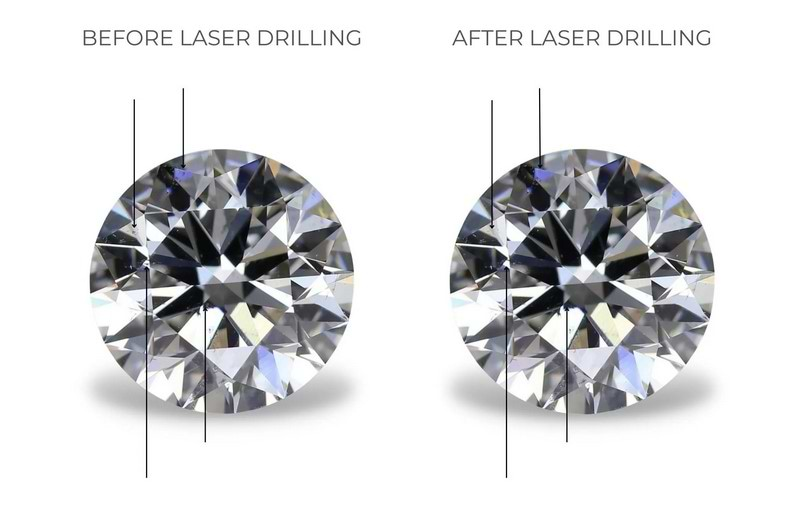 Laser Diamond Drilling (Credit Photo: Diamond Buzz)
Laser Diamond Drilling (Credit Photo: Diamond Buzz)
Fracture Filling
For diamonds with natural inclusions called feathers (flaws resembling a feather) with blemishes radiating from a central fracture, a process called fracture filling is employed.
Surface reaching feather-like fractures are filled with a molten glass like substance making these flaws much less visible. Sometimes they are not noticeable at all, and the clarity is improved.
Fracture filling can last for years with proper care, but it’s not considered permanent or stable in our industry. It is possible to lose the filling if the stone were to be cleaned via ultrasonic methods or while the item is being repaired.
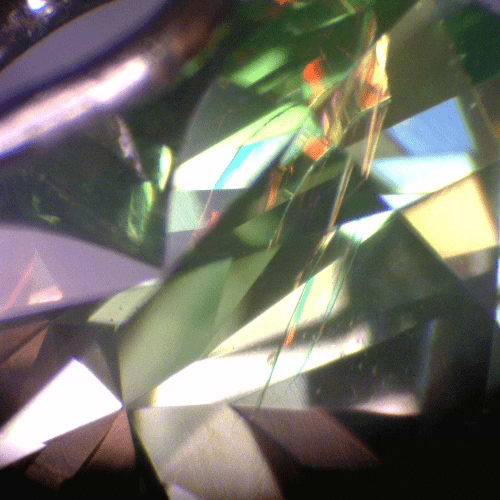 Fracture Filling (Credit Photo: SGL Labs)
Fracture Filling (Credit Photo: SGL Labs)
Risks Associated with Treated Diamonds
We cannot overstate the need for dealing with a reputable retailer if you decide to get a treated diamond of any kind. Reputable retailers should be committed to disclosing all diamond treatments to the consumer—including what to look for and how to best care for the treated diamond.
Detection Challenges
Most consumers will not be able to detect treatments in a diamond and must rely on the transparency of their retailer. Most jewelers are committed to providing full disclosure.
Reputable grading laboratories should play a prominent role in treatment detection too, so you want to buy a diamond with a laboratory certificate.
That being said, there are some retailers who may have treated diamonds in their inventory—without being aware that their goods have undergone treatment, whether permanent or not. That does happens. Those retailers are not trying to deceive consumers—the stones simply slipped by them.
Long Term Stability
In review, the irradiation process and the HTHP procedures produce treated diamonds that are considered stable. In other words, the treatment is permanent.
But fracture filled, and coated diamonds are not considered to have permanent treatments as there are situations where the treatment can be reversed and needs to be done again.
Lasered diamonds are considered to be permanent, however there is a small risk of debris entering the lasered cavity. Additionally, if the diamond had numerous lasered treatment, it could make the stone vulnerable to cracking where multiple lasering occurred.
Importance of Consumer Awareness
Transparency in the Industry
Both consumers and jewelers must be apprised of treatment in a diamond should it ever have to go to the jeweler’s bench and be exposed to the torch---since some treated diamonds are more sensitive to heat. If an irradiated stone were to undergo work on the jewelers bench without this treatment being disclosed to the jeweler, the consumer may find an altered stone, including an unintended color change.
Educating Buyers
You may find the exact diamond you dreamed of from treated diamonds. But it is imperative to know what different treatments are before you go shopping.
Here’s a Valuable Tip; Ask questions at the jewelry store where you are shopping. Once you’ve educated yourself on the various types of diamond treatment you can have a more thorough discussion with the retailer—and be assured of getting good value for your money.
Another Tip: Request to see a laboratory report for the diamond you’re considering. A reputable diamond certificate will have all the information clearly laid out including an assessment of treatments including specifically which one(s) have been done to the stone.
Don’t be afraid to ask for clarification if the report indicates something you’re not sure about.
That way you can make an informed choice—and have a frank conversation with the retailer before you buy.
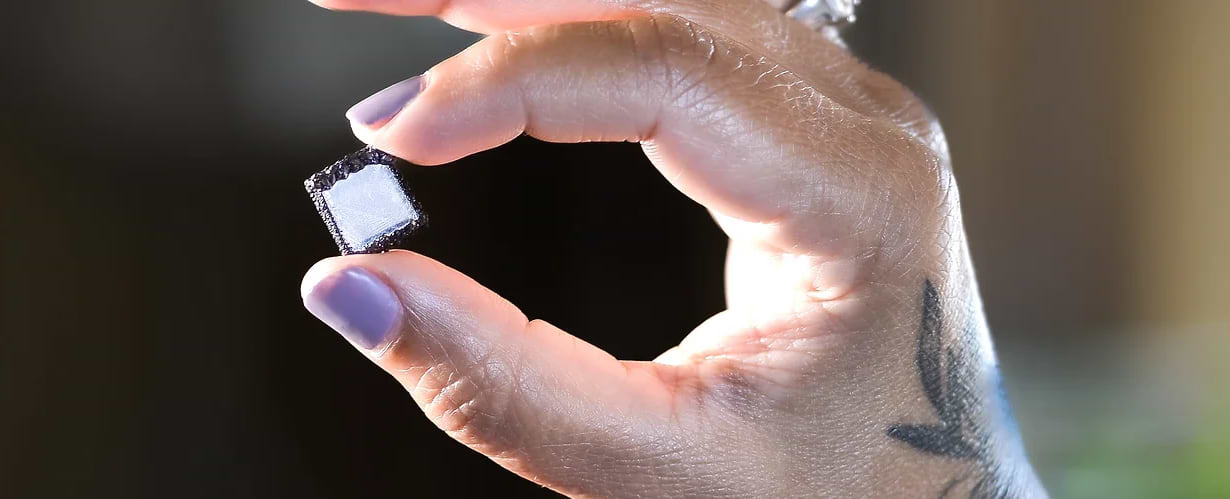 Lab Rough Diamond Flat (Credit Photo: Serenity Technologies)
Lab Rough Diamond Flat (Credit Photo: Serenity Technologies)
Natural Diamonds vs Treated Diamonds
As you’ve figured out by now, there is a great difference between natural diamonds and treated diamonds. While high quality natural diamonds are more scarce, treated diamonds are abundant and can fill that gap for consumers who want a beautiful stone—yet have a limited budget.
Value Proposition
Since high-grade natural diamonds will always be rarer in the market, there is a resale potential for these stones. The lower grade diamonds that have undergone treatment were lesser quality diamonds to begin with. They were purchased at very low prices and then subjected to various treatments to enhance their beauty and salability.
Treated diamonds should not be considered in the same category for sustaining value –or increasing it over time.
While the more modest budget for treated diamonds makes them attractive to shoppers, the trending patterns today are indicating that shoppers desire natural diamonds over their treated or synthetic counterparts.
Beauty and Authenticity
Each consumer has their own reason for choosing natural untreated diamonds. A natural diamond’s unique beauty is magnified by knowing it is an authentic natural stone.
But on the whole, the emotional aspect and symbolism of natural diamonds holds a special appeal for shoppers who want their diamonds to reflect the genuine love and commitment for each other. That can only be accomplished they believe, by selecting a natural—completely untreated diamond.
FAQs
Are treated diamonds less valuable than natural diamonds?
Yes, treated diamonds are selected from lower grade stones and therefore are less valuable.
What are the risks associated with buying treated diamonds?
Unfortunately, not all treatment processes are stable (permanent) so there are risks of the treatment coming undone, or even the integrity of the diamond being at risk.
Do reputable jewelers disclose diamond treatments to customers?
We should hope that all reputable jewelers will be completely up front with consumers, so they are buying wisely. But there are cases where the jewelers withheld treatment information from a shopper.
How does diamond treatment impact the resale value of a diamond?
Unlike natural completely untreated diamonds, a treated diamond is much less likely to have a resale value since it is less desirable.
Are there any long-term effects of diamond treatments on the gemstone?
If a diamond were to be subjected to extensive laser treatment, it might be vulnerable to breaking. Fracture filled diamonds might lose their filling and require re-filling to look attractive.
How can consumers identify treated diamonds?
It’s not likely that a consumer could identify a treatment in a diamond. They must ask questions and request a laboratory report from a reputable grading lab to fully understand that diamond.
Conclusion
Shopping for diamonds is an exciting adventure. The more you know ahead of time, the more informed your decision will be when it’s time to settle on one special diamond. There is nothing wrong with looking at treated diamonds. There are many different processes that diamonds undergo however, so do your homework ahead of time—don’t rely on the jeweler at the store.
By understanding the risks of treated diamonds and asking lots of questions, you’ll feel confident in your purchase. You may find a treated diamond that you’re completely happy with---or you may decide that natural untreated diamonds are for you. Authenticity and quality should be at the top of your checklist. This is a purchase to last a lifetime—so choose wisely.
